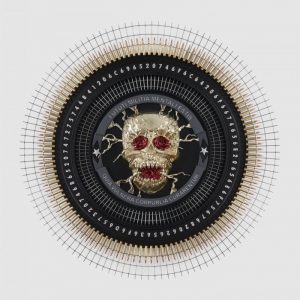Andrew Doro and Pravin Sathe are working on a series of everyday items that deal with the life embedded within the objects, we buy, use and ultimately discard.
In the second series, Detritus (III – XIV), the artists focused on travel anxiety and created airline sickness bags that breathe when closed but start hyperventilating as soon as they are opened.
 How does Detritus work? “There is a photocell that measures light, it just acts like a switch,” explains Pravin Sathe. “When the bag is closed the photocell gets no light. We have it programmed so when there is no light it breathes slowly. When the bag is opened and the photocell receives light, the program tells it to breathe fast. The “breathing” is caused by a servo motor with two strings on either end attached to the side of the bags.”
How does Detritus work? “There is a photocell that measures light, it just acts like a switch,” explains Pravin Sathe. “When the bag is closed the photocell gets no light. We have it programmed so when there is no light it breathes slowly. When the bag is opened and the photocell receives light, the program tells it to breathe fast. The “breathing” is caused by a servo motor with two strings on either end attached to the side of the bags.”
The objects comment on “ubiquitous computing”, which promises to animate household items. In this case, items which do not appear to be computerized, particularly not for any practical purpose.
There’s also the fear that ubiquitous computing can be harnessed to develop Improvised Explosive Devices and lead to technological paranoia. The artists hope to append their own ideas to ubiquitous computing reaching outside its helpful or nefarious aims into something more amorphous and ask the question: “Do inanimate objects have a life?” (more)
The next series the duo is working on are umbrellas that “breathe” as more carbon dixodie is added to the room (ie, more people in the room, the more an umbrella opens, the less people the less it opens).







